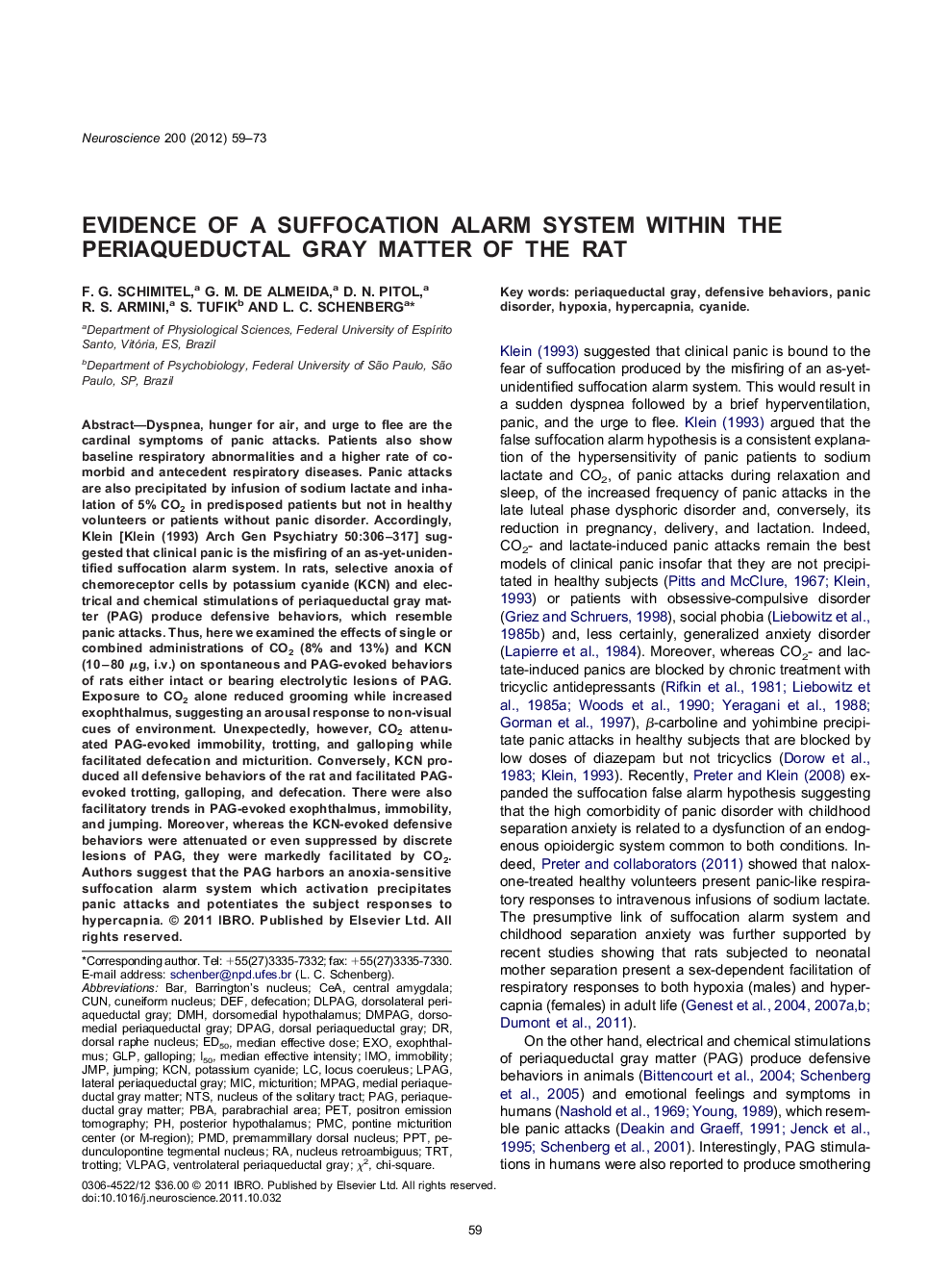| کد مقاله | کد نشریه | سال انتشار | مقاله انگلیسی | نسخه تمام متن |
|---|---|---|---|---|
| 4338632 | 1614876 | 2012 | 15 صفحه PDF | دانلود رایگان |

Dyspnea, hunger for air, and urge to flee are the cardinal symptoms of panic attacks. Patients also show baseline respiratory abnormalities and a higher rate of comorbid and antecedent respiratory diseases. Panic attacks are also precipitated by infusion of sodium lactate and inhalation of 5% CO2 in predisposed patients but not in healthy volunteers or patients without panic disorder. Accordingly, Klein [Klein (1993) Arch Gen Psychiatry 50:306–317] suggested that clinical panic is the misfiring of an as-yet-unidentified suffocation alarm system. In rats, selective anoxia of chemoreceptor cells by potassium cyanide (KCN) and electrical and chemical stimulations of periaqueductal gray matter (PAG) produce defensive behaviors, which resemble panic attacks. Thus, here we examined the effects of single or combined administrations of CO2 (8% and 13%) and KCN (10–80 μg, i.v.) on spontaneous and PAG-evoked behaviors of rats either intact or bearing electrolytic lesions of PAG. Exposure to CO2 alone reduced grooming while increased exophthalmus, suggesting an arousal response to non-visual cues of environment. Unexpectedly, however, CO2 attenuated PAG-evoked immobility, trotting, and galloping while facilitated defecation and micturition. Conversely, KCN produced all defensive behaviors of the rat and facilitated PAG-evoked trotting, galloping, and defecation. There were also facilitatory trends in PAG-evoked exophthalmus, immobility, and jumping. Moreover, whereas the KCN-evoked defensive behaviors were attenuated or even suppressed by discrete lesions of PAG, they were markedly facilitated by CO2. Authors suggest that the PAG harbors an anoxia-sensitive suffocation alarm system which activation precipitates panic attacks and potentiates the subject responses to hypercapnia.
▶Potassium cyanide (KCN) but not carbon dioxide (CO2) elicits panic-like behaviors in rats. ▶Low levels of CO2 exacerbate panic-like responses to KCN. ▶Discrete lesions of periaqueductal gray (PAG) block KCN-induced defensive behaviors. ▶KCN but not CO2 facilitates PAG-evoked defensive responses. ▶Authors suggest that panic attacks are produced by a dysfunction in PAG sensor of anoxia.
Journal: Neuroscience - Volume 200, 3 January 2012, Pages 59–73